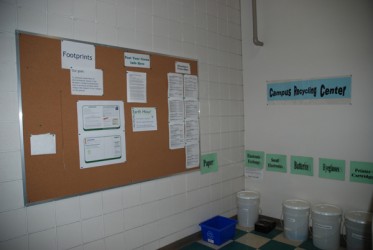Article Origin
Volume
Issue
Year
When students returned to classes in September at the Prince Albert campus of the First Nations University of Canada, it was hard for them not to notice how green their school was becoming.
Thanks to a dedicated group of individuals called the Footprints Committee, which was launched in the spring of 2009, those at the university are participating in numerous environmentally friendly programs.
“We are very interested in doing what we can for the environment to save our planet,” said Patti Cannon-Levesque, co-chair of the Footprints Committee.
Part of student orientation included the video The Story of Stuff, which traces the history of how goods and resources are produced, consumed and eventually disposed of. The video is shown primarily as an educational tool to get students thinking about how their purchases can make a small difference.
Cannon-Levesque, who is the university’s program co-ordinator for the northern health sciences access program, said although the Footprints Committee is not funded by the FNUC, the committee’s efforts have been well received by the school.
“We’ve had excellent feedback from staff, excellent feedback from students and great support from our administration,” said Cannon-Levesque.
Held in September, and to be repeated in January, was the Footprints Committee’s popular Share and Swap event. “Students tend to be quite poor, so we ask them to bring in stuff like clothing and household items. We put them on display in a hallway and people can come and take what they want,” Cannon-Levesque explained.
The Share and Swap event keeps countless items out of the garbage and provides some use to their new owners.
The Footprints Committee, which consists of about a half dozen people, has had various other projects at the school since its inception.
The committee was responsible for getting more bins on campus to recycle papers, cans and bottles. And it installed containers where people could drop off items such as small electronics, batteries, eyeglasses and ink cartridges which would then be properly disposed of.
Also, a compost pail was introduced in the staff kitchen. Cannon-Levesque is the one responsible for its contents.
“I just take it home once a week and put it in my garden,” she said.
Also introduced at the university was a fruit bowl, where items sell for $1 each. The main purpose of this project is to get people to buy fruit instead of food that comes in some type of packaging.
Besides a desire to educate people more about recycling plastics at the university, Cannon-Levesque said the Footprints Committee is also working with school officials to get them thinking more about making greener purchases, including paper and cleaning products.
“Everybody is getting online with it,” Cannon-Levesque said of her group’s various ventures.
- 2319 views

